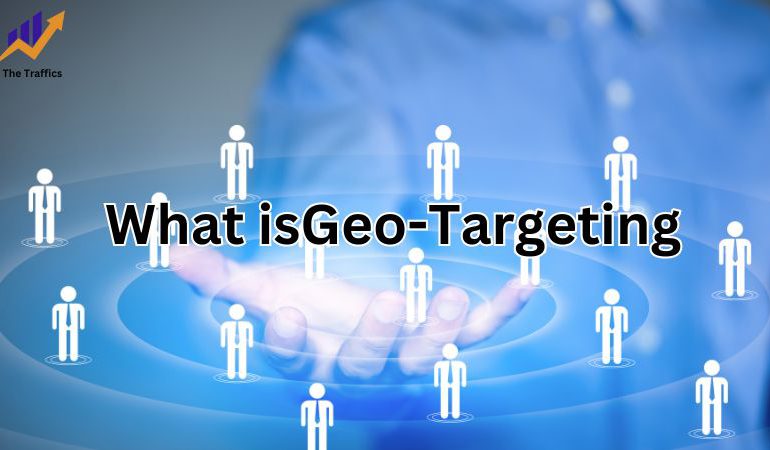What is Geo-Targeting Advertising: Should You Advertise This Way?

Geo-targeting means showing ads to people in a specific area who meet certain criteria. It goes beyond just targeting a location, it lets brands focus on users based on their behaviors and demographics. For instance, ads can be shown to part of your mobile app users when they are close to a physical store. Geo-targeting also lets you avoid showing ads to certain groups or in specific locations. The outcome is personalized and relevant messages that can boost engagement and return on investment (ROI).
How Does Geo Targeting Work?
Geo-targeted marketing relies on location data such as country, city, zip code, IP address, or device ID. Geo-targeting advertising allows advertisers to choose specific locations where they want their ads to appear. This is important for businesses like restaurants, physical stores, and online shops that rely on local customers or deliveries.
The reason is that showing ads to people outside the relevant area can lead to wasted impressions and clicks, which means spending money on marketing without getting any benefit in return. For many advertisers, it is important to use a geo-targeting marketing strategy to spend their marketing budget wisely and effectively.
Types of geotargeting advertising
When you’re setting up geo-targeted advertising and marketing, you have different options to choose from. These include considering past shopping behaviors, focusing on specific locations, or even targeting based on the weather. If you want to be more exact, you can also use radius targeting to define a specific area.
Radius targeting
Radius targeting is a useful tool when you want to reach users in a very specific location. Many advertisers use this method to connect with people in a particular area who might be interested in their business.
Audience targeting
Audience targeting allows you to group consumers into segments based on factors like demographics, interests, and shopping behavior. You can get even more specific by creating geo-targeted campaigns that match your users’ lifestyles and interests. Target your ads to people who have visited a specific brand, location, or category.
Location targeting
Geo-targeting advertising relies on location targeting to gain insight into consumer behavior in specific areas. This ensures that you only target consumers who live within a particular geographic radius.
Weather targeting
Weather has an impact on consumer behavior and purchasing decisions. Colder temperatures may prompt interest in warm, cozy clothing, whereas individuals on summer holidays might be searching for sunglasses or a new bathing suit. Utilizing weather-targeted advertising can enhance the effectiveness of your campaigns, especially if you offer seasonal products or services. This approach can be applied to your website, emails, push notifications, digital ads, and other marketing channels.
Advantages of Using Geo-Targeted Marketing
By using a geo-targeting marketing strategy, businesses can gain various important benefits that improve the efficiency of their marketing efforts:
Increases the Quality of Traffic to the Website:
Geo-targeting doesn’t just aim to bring in any website visitors; it aims to attract high-quality traffic that is more likely to show interest in a business’s products or services.
By focusing on specific locations, businesses make sure that the website traffic they get is related to what they offer, increasing the likelihood of turning those visitors into loyal customers.
Higher return on investment (ROI)
Having relevant traffic is crucial for achieving better conversion rates, as visitors from targeted locations are more likely to be genuinely interested in the business’s offerings. When you start monitoring campaign performance based on location, it results in a higher return on investment (ROI) for marketing efforts.
Target Specific Demographics:
One significant advantage of geo-targeting marketing is its ability to pinpoint and appeal to specific demographic groups within a larger audience.
Different locations often have unique demographic characteristics. By tailoring marketing messages and offers to match the preferences and needs of these specific demographics, businesses can create a stronger connection and build trust with their target audience.
This level of customization ensures that businesses deliver the right message to the right people, leading to increased engagement, enhanced brand loyalty, and, ultimately, improved conversion rates.
Target Specific Countries or Languages:
Geo-targeting marketing allows businesses to concentrate their marketing efforts on specific countries or regions where they operate or want to expand. When entering new markets, it’s essential to deliver content in the local language to effectively engage with the target audience.
Tailoring marketing campaigns to the language understood by the audience enhances user experience, increases engagement, and improves the likelihood of conversions.
Moreover, different regions may have unique cultural nuances or preferences that can be considered in creating highly localized marketing strategies. Aligning with the local culture allows businesses to establish a stronger connection with potential customers, fostering trust and brand loyalty.
Lower PPC Costs:
Geo-targeting advertising strategies help businesses save money, especially in pay-per-click (PPC) advertising. It means focusing on specific places where the cost of each click is less and there’s not as much competition. This way, businesses can make their ads work better and get more value from their advertising money.
By concentrating on areas where their target audience is, businesses can spend their money more wisely and not waste it on unnecessary clicks. This cost-saving benefit lets businesses make the most out of their marketing budget and have a bigger impact on their ads.
Local SEO
Using geotargeting in SEO can improve your marketing strategy and strengthen your local search engine optimization (SEO) efforts by creating content that is more relevant to local keywords.
Mobile, websites and search
Geotargeting advertising is particularly beneficial for businesses that depend on local foot traffic, proximity, and deliveries in specific locations. It can be applied to mobile geotargeting, local search, or geotargeting on a website.
Make relevant content
People prefer to see ads for businesses that are nearby, not in a different city. Geo-targeting advertising helps you create content that is relevant to users in specific regions, ensuring that you only generate content that appeals to them. Displaying an ad to someone just a mile away from your business is much more effective than showing it to someone who lives in a different city.
Is Geotargeting Marketing Effective?
There are several reasons why adding geotargeting to your marketing strategy makes sense. Almost (94%) of people have smartphones and they spend more leisure time on these devices than watching TV. According to research, 83% of marketers find their campaigns more successful when they use location data.
Geotargeting technology can assist marketers in attracting more customers and enhancing relationships with them. By understanding customer behavior, marketers can meet their needs, leading to increased engagement in campaigns.
Geotargeting is especially effective for boosting both online traffic and foot traffic.
Using location data is proven to make marketing campaigns 80% more effective. Knowing where potential customers spend their time makes it easier to show them the right promotions at the right time.
Geo-Targeting vs. Geofencing
Geofencing and geotargeting are both forms of location-based marketing. Geofencing is often linked with platforms like Radar or technologies such as Gimbal’s beacons. It involves setting a specific geographic boundary, referred to as a “fence,” and delivering ads to all users within that area.
Geotargeting builds on this idea by using behavior and demographic data to more precisely target a specific audience within a geographical radius.
For instance, a retailer could send push notifications to female app users near a store who have previously bought women’s shoes. This combination of behavior and location data adds another layer to marketers’ ability to offer a customized and contextually relevant experience for customers
Geotargeting Examples
If you’re considering how to incorporate geotargeting into your upcoming marketing strategy, here are a few successful examples from clients:
Ulta Beauty
Ulta Beauty enhanced the impact of their new store openings by using geo-targeting. The beauty retailer utilized location and behavioral insights to connect with potential customers in proximity to competitor stores, aiming to capture those most interested in learning about new Ulta Beauty locations. Stores supported with GroundTruth’s location insights performed better than others, achieving their weekly visitation targets 43% faster than non-supported stores.
Toyota
Toyota used GroundTruth’s neighborhood and location data to pinpoint audiences with a high likelihood of shopping for a new car and to motivate them to visit nearby auto dealerships. The campaign led to 1,200 visits to specific dealerships and additional visits to smaller dealerships that were not initially targeted in the geotargeting advertising efforts.
Burger King
By combining geotargeting and geofencing, Burger King introduced a promotion offering one-cent Whopper burgers to individuals who downloaded their app and ordered within 600 feet of their competitor, McDonald’s.
The outcomes were remarkable, Burger King experienced an impressive 1.5 million app downloads, generated 3.5 billion media impressions, and achieved the highest foot traffic in years.
Conclusion
In conclusion, Geo-Targeting Advertising is a powerful and strategic approach for businesses aiming to enhance their marketing efforts. In the ever-evolving landscape of digital marketing, Geo-Targeting Advertising stands out as a versatile and effective strategy. As businesses strive to stay ahead of the competition, embracing this approach can prove instrumental in achieving marketing success, driving website traffic, and ultimately, boosting overall business growth.






